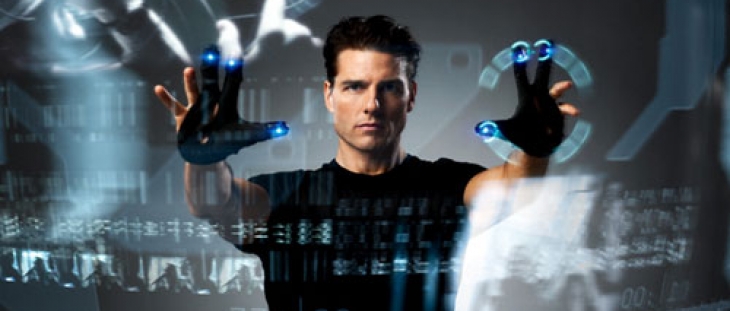
For the past couple of decades, as digital technology has become an ever-more important part of our lives, we’ve mostly been asked to learn its language and idiosyncrasies, rather than the other way round—a phenomenon that has surely resulted in the punching of untold numbers of walls.
But that one-way demand has started to change quite radically in the past five years. To wit, instead of adapting ourselves to technology, digital tech is now starting to understand more human ways of interaction, and as a result, technology is going to get infinitely easier to use. Yet strangely, as the digital becomes more and more accessible, it’s also going to become increasingly invasive and worrisome.
The coming change is largely based on what are called Natural User Interfaces, or NUIs. Unlike, say, the typical mouse and keyboard combo, which demands you understand things that never existed before—double clicks, keyboard shortcuts etc.—NUIs instead ask you to do things you already know. Probably the most common example is pinching and zooming on the iPhone, which if not exactly “natural”, is still something that almost anyone can do.
We’re now slipping into the next generation of that kind of interface, most notably with Apple’s Siri and Microsoft’s Kinect, which likely each represent one half of a forthcoming whole. While Siri is primarily about interpreting natural language—“what does my day look like today?”—Kinect, though it has some voice features, is more about interpreting the movement of a body, like a wave or other such hand gesture.
It seems reasonable, and even practical, to theorize that a combination of these two technologies will start to permeate day-to-day life. Simple tasks we engage in now, like playing a movie, programming a microwave or doing laundry will inevitably be performed with our voices or bodies, and as Siri and Kinect-like technologies improve, more complex tasks will use them too. The point is that once the movement toward making technology more human has started, there isn’t any real reason to stop, and a Star Trek-like future is much closer to reality than ever.
On the surface, that’s great news. I’m an ardent believer in making technology accessible. There’s something profound and powerful about having modern interfaces become more intuitive and natural, as it unleashes the power of technology for infinitely more people.
Yet, it seems there’s also a more insidious, dystopian edge to this opening up of tech. Consider this: according to a rumour on British site Eurogamer, the next iteration of Kinect will be so accurate that it will be able to read lips, and maybe even judge your emotional state. Whether this specific rumour is true or not, the technology is undoubtedly coming, and its possibilities seem full promise.
But if in a couple of years we’ll be using Kinect to silently mouth our Netflix choices, what ends will it be put to in 20 or 30 years, when such tech might be in significantly more places than living room? What happens when machines can not only surveil us visually, but through speech and gestures too? As local tech thinker Tim Maly likes to point out, the formerly inert world of objects are starting to learn how to read us, and that has deeply ambivalent consequences. It means that ideas and concepts we’ve had a reasonable grasp on for decades—like what is public and private, or what freedom means in a democratic context—are all under assault.
Strangely, this is the dialectic at the core of “making technology accessible”. The more tech is crafted to be cheap, easy to use and ubiquitous, the more profound and widespread its effects. The more people are able to wield cameraphones, the more complex civil disobedience becomes. The more one’s identity and habits of consumption are monitored, the more intimately “the market” is interwoven into our lives.
Yes, this is cause for worry. But if anything, the troubling ambivalence at the heart of technological trends is a sign of the historical import of our moment. What we’re living through now is the beginning of a shift on par with the invention of writing: for each benefit, there will be a drawback, and some of those ups and downs will have immense, decades or centuries-long effects.
It’s undoubtedly odd to think that a cellphone or a videogame peripheral represent things that diligent future scholars will point to as significant in the annals of time. But that’s precisely the strangeness of our accelerated, constantly-shifting, hyper-capitalist era. And as we quite rightly celebrate the gains we make when technology slowly learns to interpret our languages and our gestures, it also behoves us to step back and question just what exactly we are teaching it.
Navneet Alang is the Toronto Standard’s Tech Critic. (@navalang)














